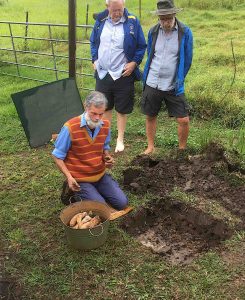Biodynamic Agriculture
What is Biodynamic Agriculture?
Biodynamics is the one of the best-known daughter movements of Anthroposophy. It is practised worldwide with over 150.000 ha of Demeter-certified biodynamic land. The concept behind biodynamics has inspired many related fields such as landscape work, flow forms, holistic nutrition, food culture, social therapy, bee-keeping and viniculture.
The biodynamic approach to the land is an ethical approach that respects the ecology, culture and traditions of place. It is collaboration between humans and nature where both can flourish. But Biodynamics also recognises that sustainability of existing practices on the land is not enough. With climate change and an increasing exhaustion of the world’s natural resources, a new approach is required to safeguard the future. Human beings are responsible for the degradation of our natural world through economically-driven practices that are gradually destroying the viability of the land to produce. So we need to reconsider how we design and apply our agricultural systems to support the earth’s health.
Biodynamics as a radical practice
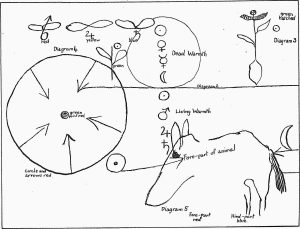
Fig.1 Diagram from Steiner’s Agriculture Course, Lecture 2
Biodynamics is a radical approach to agriculture, both ethical and holistic, where a farm, vineyard, orchard or garden is viewed as part of a living organism and each activity affects everything else.
Regeneration of the earth is core and the starting place on any farm or garden that seeks to switch to biodynamics. Then there is balanced integration of human beings with nature, so the social and cultural elements of place are also important. Creating a living context within which human beings, animals and plants can thrive and develop goes beyond sowing and reaping. It must include a respect and understanding of the essential nature of the land, while still producing nutrient-dense food and finding ways to live in balance with wildlife and climate.
Since agriculture has a profound ecological impact on the earth, ecological responsibility is also a core principle of biodynamic. This includes how we package and transport food products. All parts of the supply chain and its effects must be considered, including how they influence fields such as medicine and education,
Biodynamics as a worldwide practice
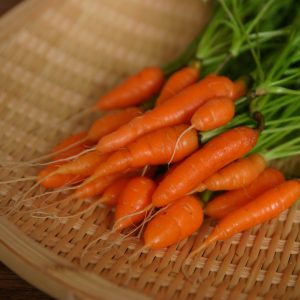 The guiding body for this worldwide anthroposophical agriculture movement is located in the Section for Agriculture, based at the Goetheanum in Switzerland. This body sees biodynamic agriculture as having an active contribution to make in these times of major global challenge and, in response, presents holistic perspectives and solutions to meet these challenges. To this end, the Section develops essential impulses in a variety of subject areas and disciplines of biodynamic agricultural and nutritional culture. Climate – resilience – health is the theme for 2021-2024. There are currently projects and planned events in training, advice, nutrition, research, biodynamic preparations, 100 years of agricultural course, climate crisis, quality, the agricultural organism, associative economy and animal husbandry under this broad theme. There are also active specialist groups on the topics of herbs and medicinal plants, olives, fruit growing and viticulture.
The guiding body for this worldwide anthroposophical agriculture movement is located in the Section for Agriculture, based at the Goetheanum in Switzerland. This body sees biodynamic agriculture as having an active contribution to make in these times of major global challenge and, in response, presents holistic perspectives and solutions to meet these challenges. To this end, the Section develops essential impulses in a variety of subject areas and disciplines of biodynamic agricultural and nutritional culture. Climate – resilience – health is the theme for 2021-2024. There are currently projects and planned events in training, advice, nutrition, research, biodynamic preparations, 100 years of agricultural course, climate crisis, quality, the agricultural organism, associative economy and animal husbandry under this broad theme. There are also active specialist groups on the topics of herbs and medicinal plants, olives, fruit growing and viticulture.
Principles and practices of biodynamics
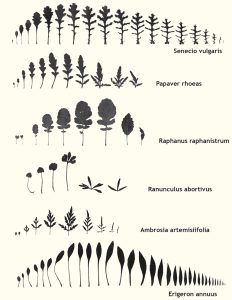
Fig.2. Leaf metamorphosis
The model underlying biodynamics is Goethean Science, perhaps the most distinctive methodology associated with Anthroposophy. It is a phenomenological approach to science that observes the qualities of the natural world, rather than measuring them. This allows the researcher to see the wholeness inherent in the world of nature and see it with new and enlivened eyes. Modern technology, research and traditional knowledge come together to form a fruitful method of care and management that addresses the unique needs, environment and conditions of each environment and location.
You can learn more about Goethean Science here (external American site), watch this video or find a book on the topic.
So how do I find out about workshops on biodynamic agriculture?
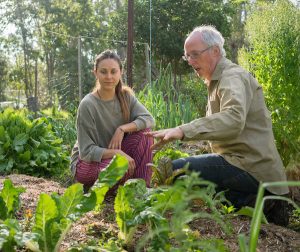
Biodynamics associations in Australia
Useful guides and readings
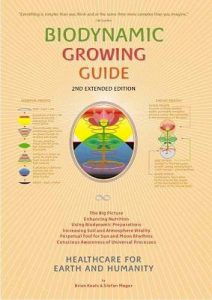 The Biodynamic Growing Guide and Astro Calendar are both tools for assisting people in sowing, transplanting, cultivating and harvesting according the seasonal movements of the stars and planets in the Southern Hemisphere.
The Biodynamic Growing Guide and Astro Calendar are both tools for assisting people in sowing, transplanting, cultivating and harvesting according the seasonal movements of the stars and planets in the Southern Hemisphere.
The guide offers advice on when to work the soil, what kinds of preparations to apply to the garden, when to plant, when to work in the garden, and when to harvest crops. The calendar provides a tool to help people find their interconnectedness with the macrocosmic world in the microcosm of their own garden or farm.
Now in its 33rd year, the calendar brings together astronomy, biodynamics and Rudolf Steiner’s Soul Calendar. In this way, the soul’s journey through the year is accompanied by the growth of the plants and animals. By working with their rhythms, we grow our souls too.
The 2024 Antipodean Astro Calendar by Brian Keats is now available. Brian also co-authors the Biodynamic Growing Guide.
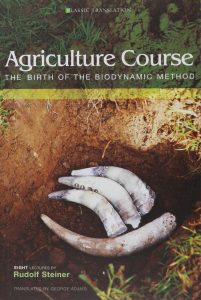 Biodynamics was originally inspired by the Agriculture lectures Rudolf Steiner gave in the 1920s to farmers seeking advice. So the biodynamic agriculture was born and its methods continue to be used in gardens and farms around the world.
Biodynamics was originally inspired by the Agriculture lectures Rudolf Steiner gave in the 1920s to farmers seeking advice. So the biodynamic agriculture was born and its methods continue to be used in gardens and farms around the world.
To learn more about the foundations of biodynamics, you can order a copy of these lectures and other biodynamic resources from Rudolf Steiner Book Centre.
Biodynamicus, an Australian-based initiative supporting the study of the Agriculture Course, provides background material to lectures and supplementary readings from the work of Rudolf Steiner, on themes introduced in the Agriculture Course, arranged by lecture. The site also has links to biodynamic resources world-wide.
The future needs more active farmers and gardeners who consciously create an attitude of responsibility within themselves so that they become guardians of the soil and true friends of nature.
Excerpt from Heinz Grotzke’s, “The Future After the First 50 Years,” from Biodynamic Magazine #112, Fall 1974.
